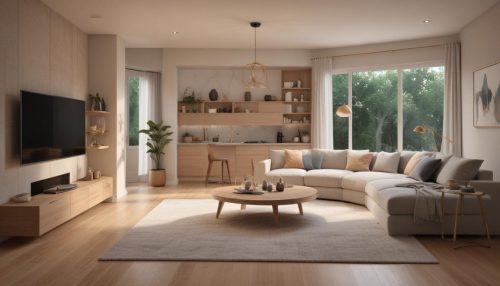Designing Gardens That Attract Pollinators
August 15, 2025
Pollinators, such as bees, butterflies, birds, and bats, play a crucial role in the health of our ecosystems. As the world faces growing environmental challenges, the importance of supporting pollinators has never been clearer. Designing a garden that attracts these vital creatures not only helps boost biodiversity but also supports food production and ecosystem stability. We will explore how you can Designing Gardens That Attract Pollinators and contributes to a healthier environment.

Why Pollinators Are Important
Pollinators are essential for the reproduction of many plants, including a large percentage of the world’s food crops. In fact, over 75% of flowering plants and about 35% of global food crops rely on pollinators for reproduction. However, pollinator populations are in decline due to habitat loss, pesticide use, and climate change. By designing pollinator-friendly gardens, you can create habitats that support these vital species and help restore balance to our ecosystems.
Key Benefits of Pollinator-Friendly Gardens
- Enhanced Biodiversity: Pollinator-friendly gardens support a variety of species, contributing to a more balanced and diverse ecosystem.
- Increased Crop Yields: Pollination improves the productivity of fruit, vegetable, and flower crops, benefiting both personal and commercial gardens.
- Environmental Impact: Creating habitats for pollinators helps mitigate the negative effects of habitat loss, promoting ecological balance.
- Educational Opportunity: Pollinator-friendly gardens serve as educational tools, raising awareness about the importance of biodiversity and environmental stewardship.
For more on the importance of pollinators, check out The Pollinator Partnership.
How to Design a Garden That Attracts Pollinators
1. Choose Native Plants
Native plants are adapted to your region’s climate and soil conditions, making them more attractive to local pollinators. They are also more likely to provide the food and shelter that native pollinators need.
- Select Flowers with Nectar and Pollen: Bees, butterflies, and other pollinators rely on nectar and pollen for food. Choose plants that provide these resources, such as echinacea, sunflowers, and lavender.
- Plant in Groups: Pollinators are more likely to visit groups of plants of the same species, so plant flowers in clusters to make them more visible and accessible.
- Support a Variety of Pollinators: Different pollinators are attracted to different types of flowers. Include a variety of shapes, colors, and sizes of flowers to attract a diverse range of pollinators.
For more on native plants for pollinators, check out The U.S. Fish and Wildlife Service’s Native Plants Guide.
2. Provide a Continuous Blooming Season
Pollinators need food throughout the growing season, so it’s essential to plant flowers that bloom at different times of the year. By selecting plants with staggered blooming periods, you can ensure that pollinators have a consistent food source from early spring to late fall.
- Early Spring Blooms: Crocus, primrose, and pansy are early bloomers that provide food to pollinators as soon as they emerge in the spring.
- Summer Flowers: Plants like bee balm, coneflowers, and zinnias offer nectar and pollen during the summer months.
- Late-Season Blooms: Goldenrod, asters, and sedums bloom in late summer and fall, providing a vital food source for pollinators as other flowers begin to fade.
For more on seasonal flowers for pollinators, read The Royal Horticultural Society’s Guide to Pollinator-Friendly Plants.
3. Create a Diverse Garden Habitat
A garden that attracts pollinators is more than just a collection of flowers. Creating a diverse habitat with a variety of plants, trees, and structures will provide pollinators with food, shelter, and nesting sites.
- Add Shrubs and Trees: Shrubs like lilac and trees like crabapple or flowering dogwood provide shelter and food for pollinators, especially during different seasons.
- Provide Water Sources: Pollinators need water to drink and bathe in. Consider adding a shallow birdbath or a small pond with rocks for easy access.
- Include Nesting Sites: Some pollinators, like bees, need places to nest. Leave areas of bare soil, or build bee hotels to provide shelter for solitary bees.
For more on creating a diverse pollinator habitat, check out The Xerces Society’s Pollinator Habitat Guidelines.
4. Avoid Pesticides and Chemicals
Chemicals, including pesticides and herbicides, can be harmful to pollinators. Instead of using chemical treatments, focus on natural methods of pest control and encourage beneficial insects, like ladybugs, that prey on harmful pests.
- Use Organic Methods: Opt for organic or eco-friendly pest control options, such as neem oil or insecticidal soap.
- Encourage Beneficial Insects: Plant herbs like basil, mint, and fennel to attract predatory insects that naturally control pest populations.
- Hand-Pick Pests: For small infestations, try manually removing pests rather than using chemicals.
For more on eco-friendly pest control, read Organic Gardening’s Guide to Safe Pest Control.
5. Create a Pollinator Corridor
A pollinator corridor is a network of pollinator-friendly habitats that connect various green spaces, making it easier for pollinators to travel and access food. By planting pollinator-friendly plants along the edges of roads, in vacant lots, or in community gardens, you can help create a connected ecosystem that supports pollinator populations.
- Plant Along Pathways: If you have a large property or garden, plant pollinator-friendly flowers along the edges, fences, and walkways to create continuous access to food.
- Collaborate with Neighbors: Work with neighbors or local organizations to create community-wide pollinator corridors that help pollinators move between different habitats.
For more on creating pollinator corridors, read Pollinator Partnership’s Guide.
Conclusion: Creating a Pollinator-Friendly Garden for a Healthier Environment
Designing a garden that attracts pollinators is not only beneficial for the environment, but it also contributes to a healthier and more vibrant garden. By selecting native plants, providing diverse habitats, and reducing chemical use, you can support pollinators and enjoy the rewards of a flourishing, sustainable garden. With continued effort and awareness, we can all play a part in protecting the vital pollinators that sustain our ecosystems and food systems.
References:
- U.S. Fish and Wildlife Service. (2021). Native Plants for Wildlife Habitat and Conservation Landscaping. Retrieved from https://www.fws.gov/chesapeakebay/NativePlants.html
- The Royal Horticultural Society. (2021). Plants for Pollinators. Retrieved from https://www.rhs.org.uk/
- Xerces Society. (2021). Pollinator Habitat Guidelines. Retrieved from https://www.xerces.org/
- Pollinator Partnership. (2021). Creating Pollinator Corridors. Retrieved from https://www.pollinator.org/





